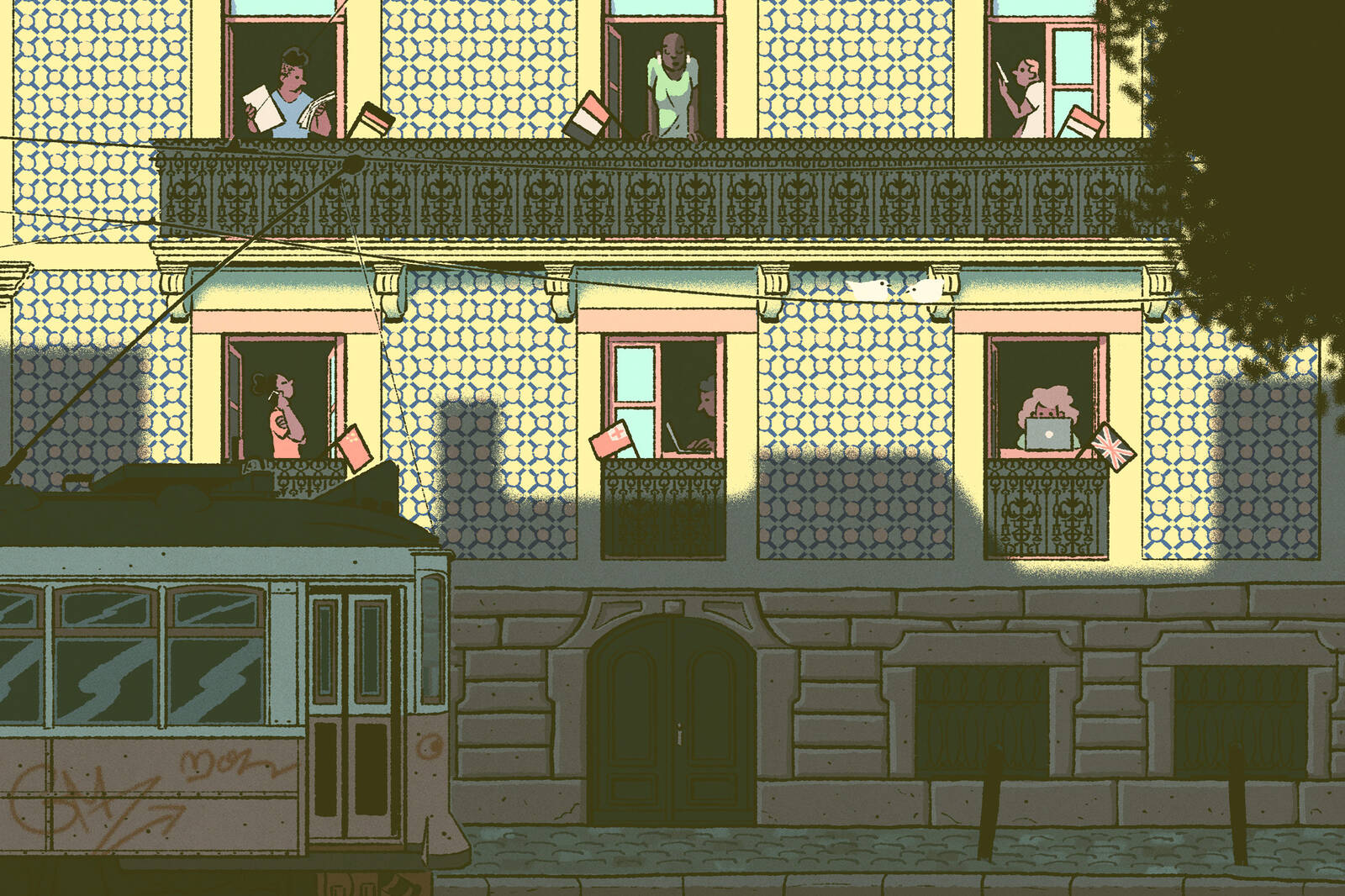
Michael Meier
What Population Trends in Lisbon Tell Us about the
Future of Global Cities
It’s an all-too-common phenomenon in modern society: a city grows popular, visitors flock to the region, and the locals who once called the area home are driven out by the resulting surge in prices.
Case in point: Lisbon, Portugal. As a Portugal native, Sergio Rebelo has seen the large influx of foreign residents and tourists transform the country’s capital.
Rebelo, a professor of finance at Kellogg, explored this transformation in Lisbon and the surrounding municipalities from 2011 to 2021 in a research paper (covered here in Kellogg Insight), along with colleagues Pedro Teles and Miguel Godinho de Matos of the Católica-Lisbon School of Business and Economics and João Guerreiro of UCLA.
The following graphs illustrate key changes the researchers observed and the impact they have had on the city’s makeup and cost of living.
Reshaping Lisbon
Portuguese census data shows a significant influx of foreign residents into Lisbon and the surrounding municipalities from 2011 to 2021. In Lisbon alone, the number of foreign residents grew by 20,600 people during that period.
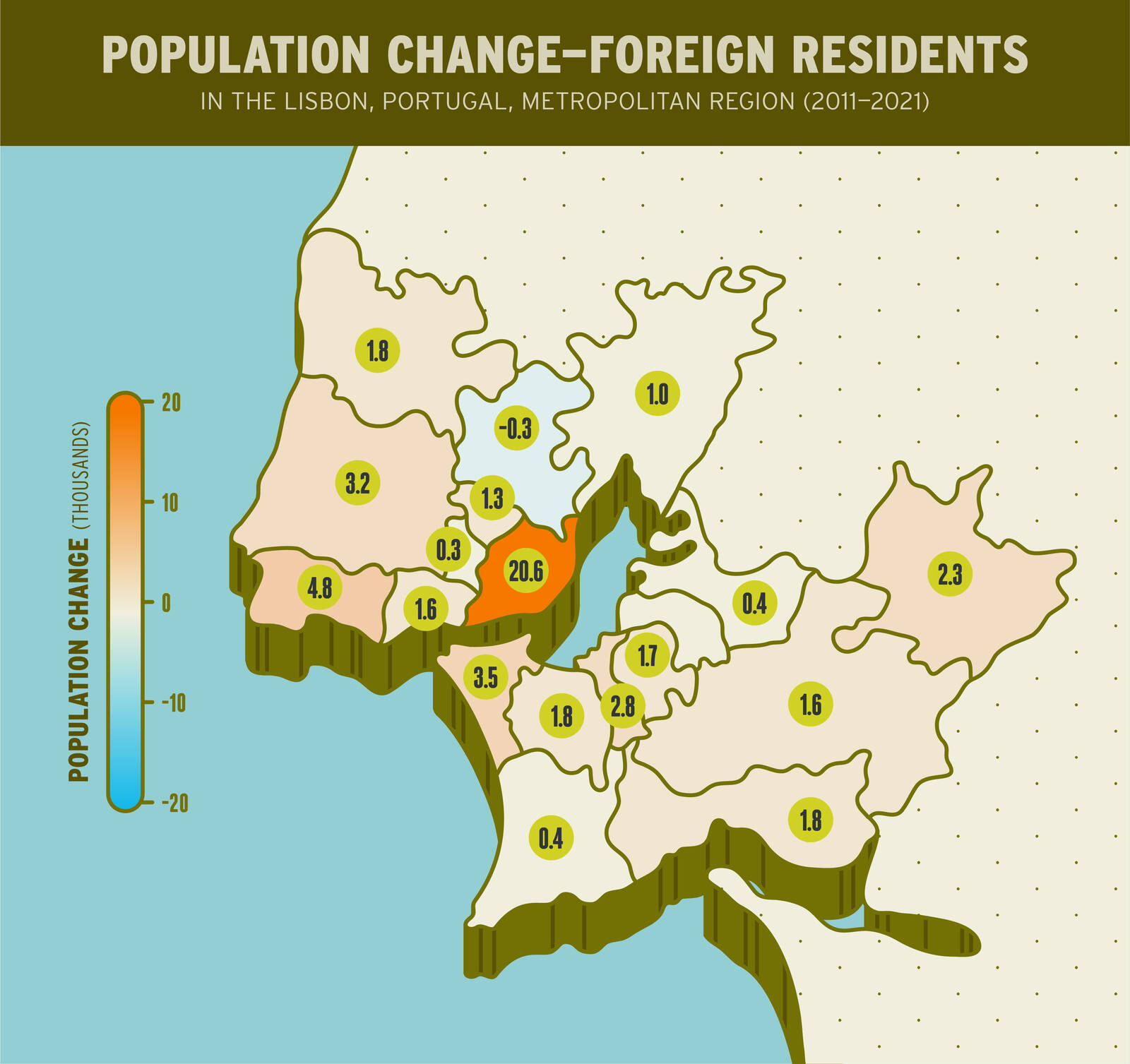
The number of tourists jumped as well. The area was a visiting hub for 48,700 tourists in 2022, up from 23,800 in 2011—an increase of 24,900 people. Additional tourism data confirms this upward trend in 2023 and 2024, suggesting that this rise in tourism was not simply a post-pandemic rebound.
In all, the number of foreign residents and tourists increased by 45,500 people from 2011 to 2021. This represents 8.2 percent of the total population in this area in 2011.
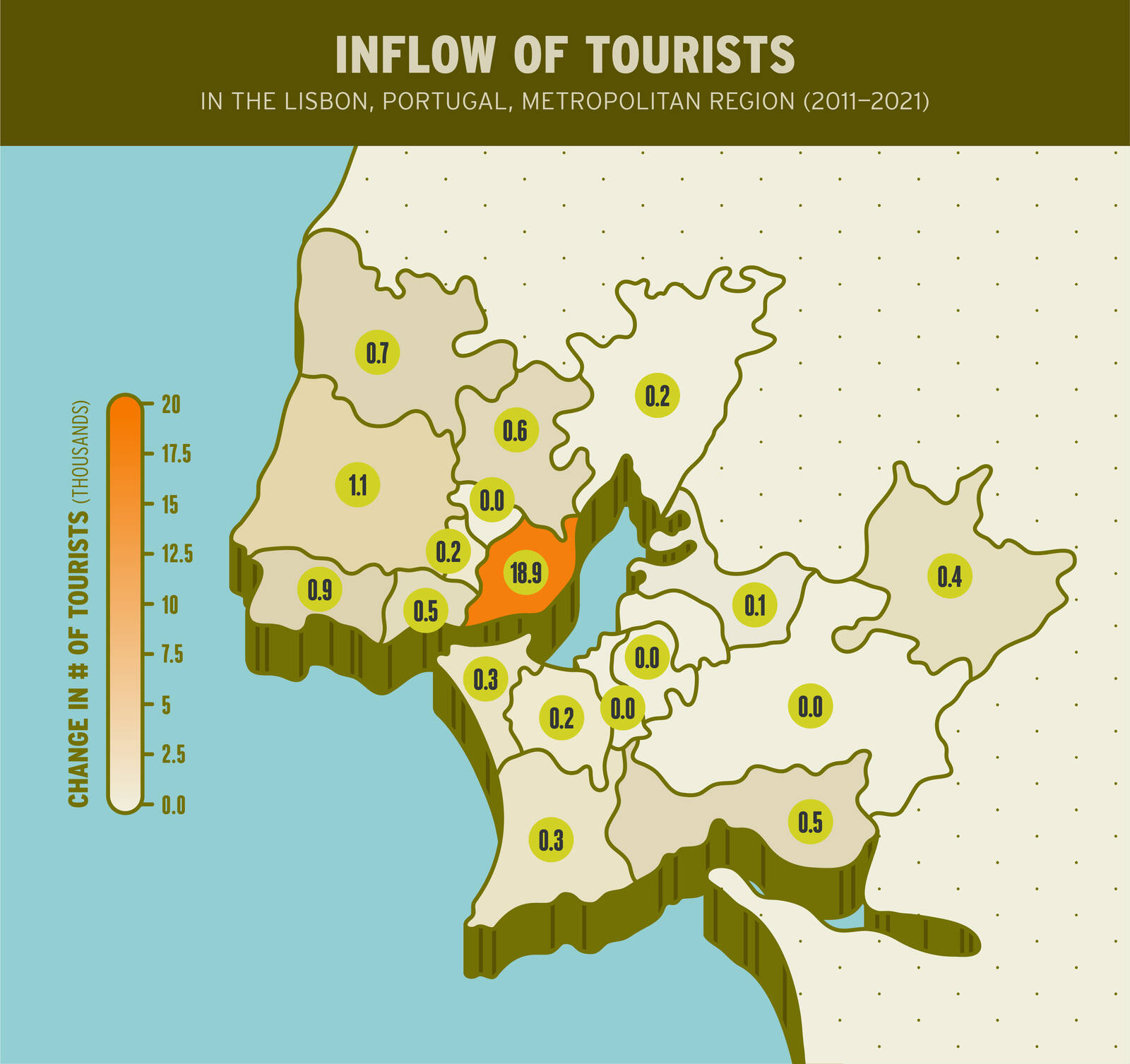
The decade also saw a slight decrease in available family housing in Lisbon and the surrounding municipalities. (Limited construction of new houses was outpaced by the destruction of existing homes during this period.) For example, in Lisbon, the number of family homes fell by 3,000 between 2011 and 2021—a 1 percent drop in total family-housing stock.
Collectively, the increase in tourists and foreign residents, plus the decrease in family-housing stock, contributed to inflationary pressures across the region.
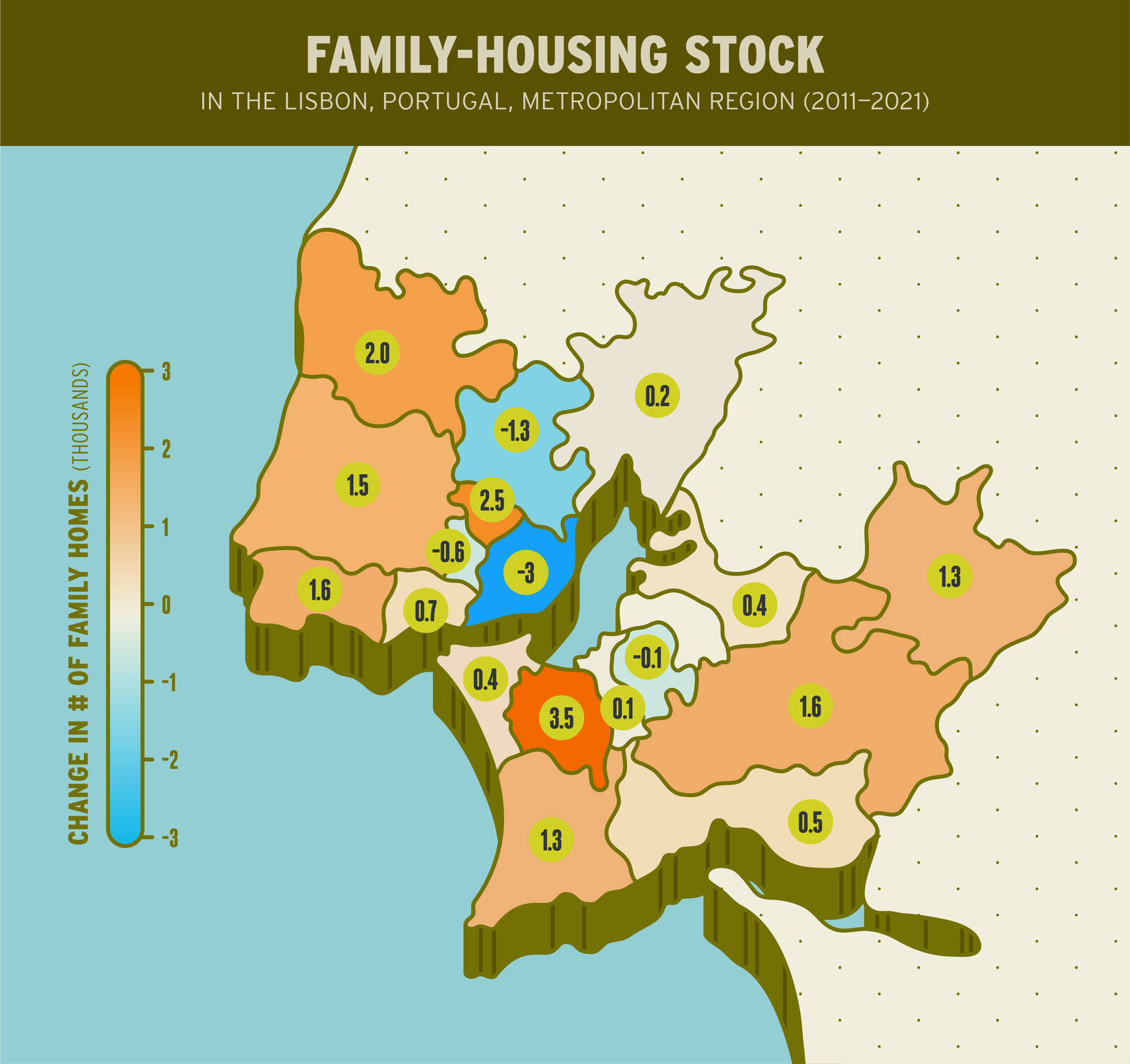
Inflation-adjusted house rental prices in Lisbon rose to 14.4 euros per square meter in 2021, up 41 percent from 10.2 euros per square meter in 2011. The average price was 12.2 euros per square meter in 2016.
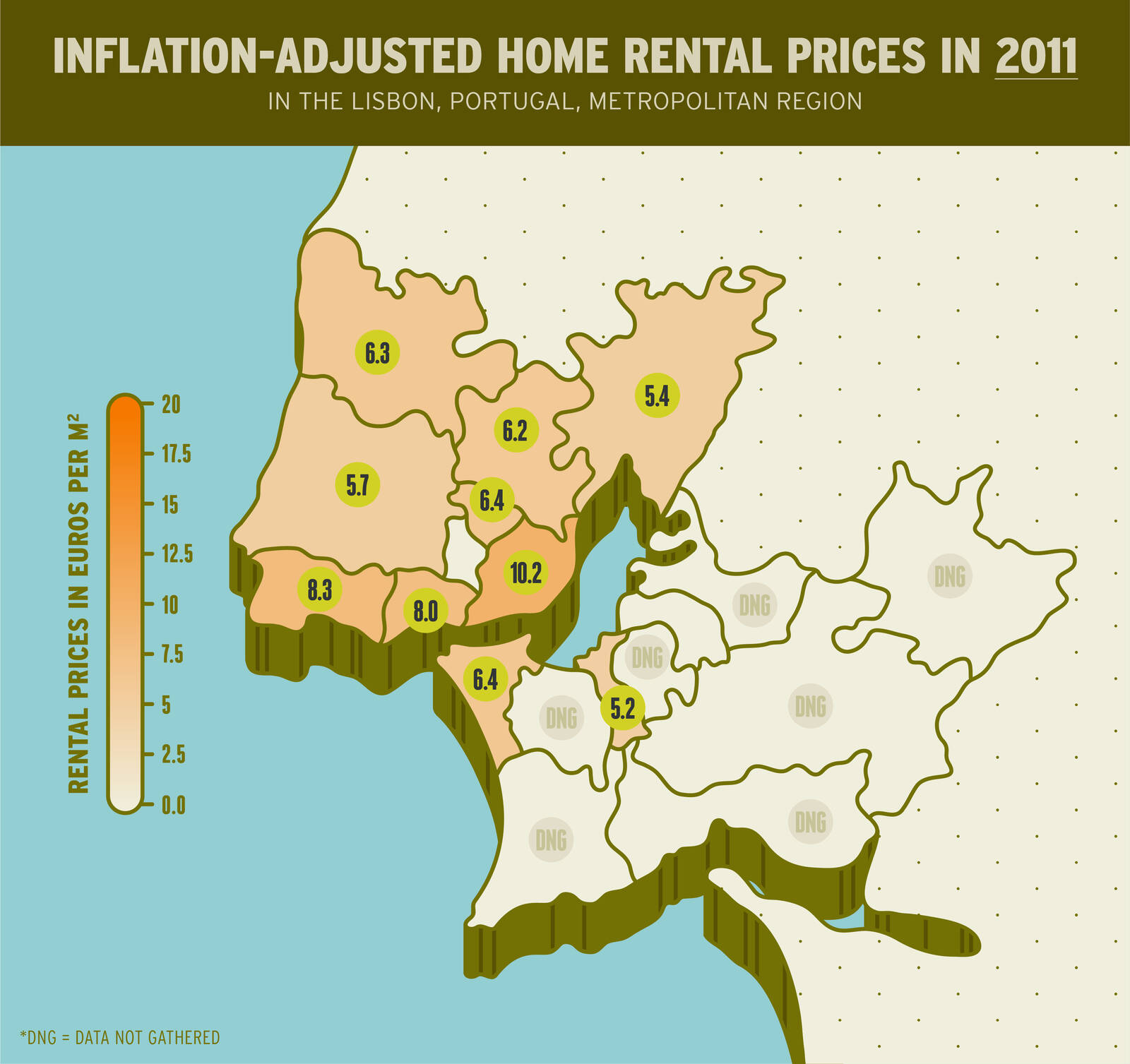
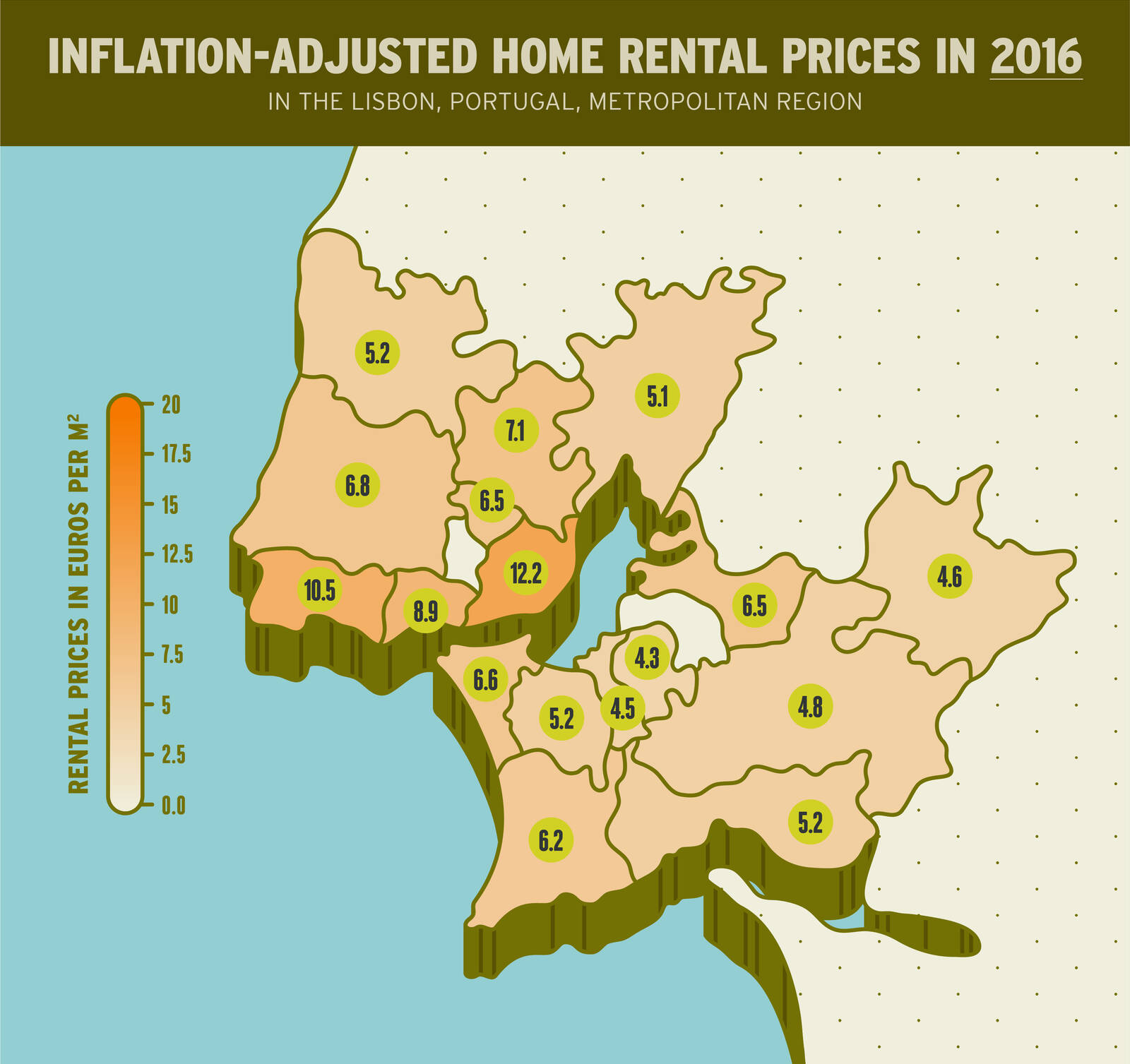
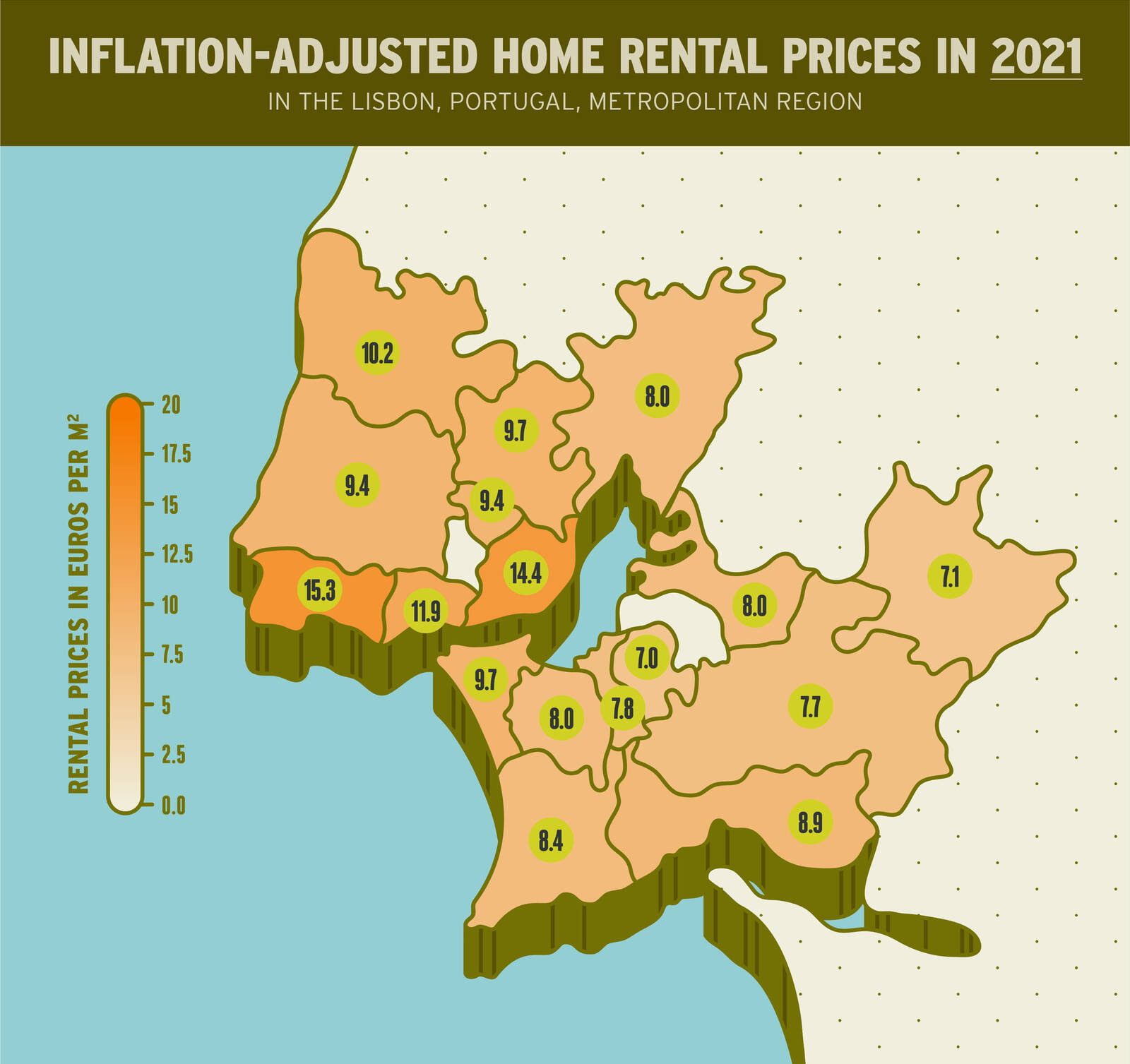
Inflation-adjusted housing purchase prices increased by 25 percent during the same period. Lisbon home prices rose from 2,950 euros (per square meter) in 2011 to 3,054 euros in 2016 to 3,701 euros in 2021.
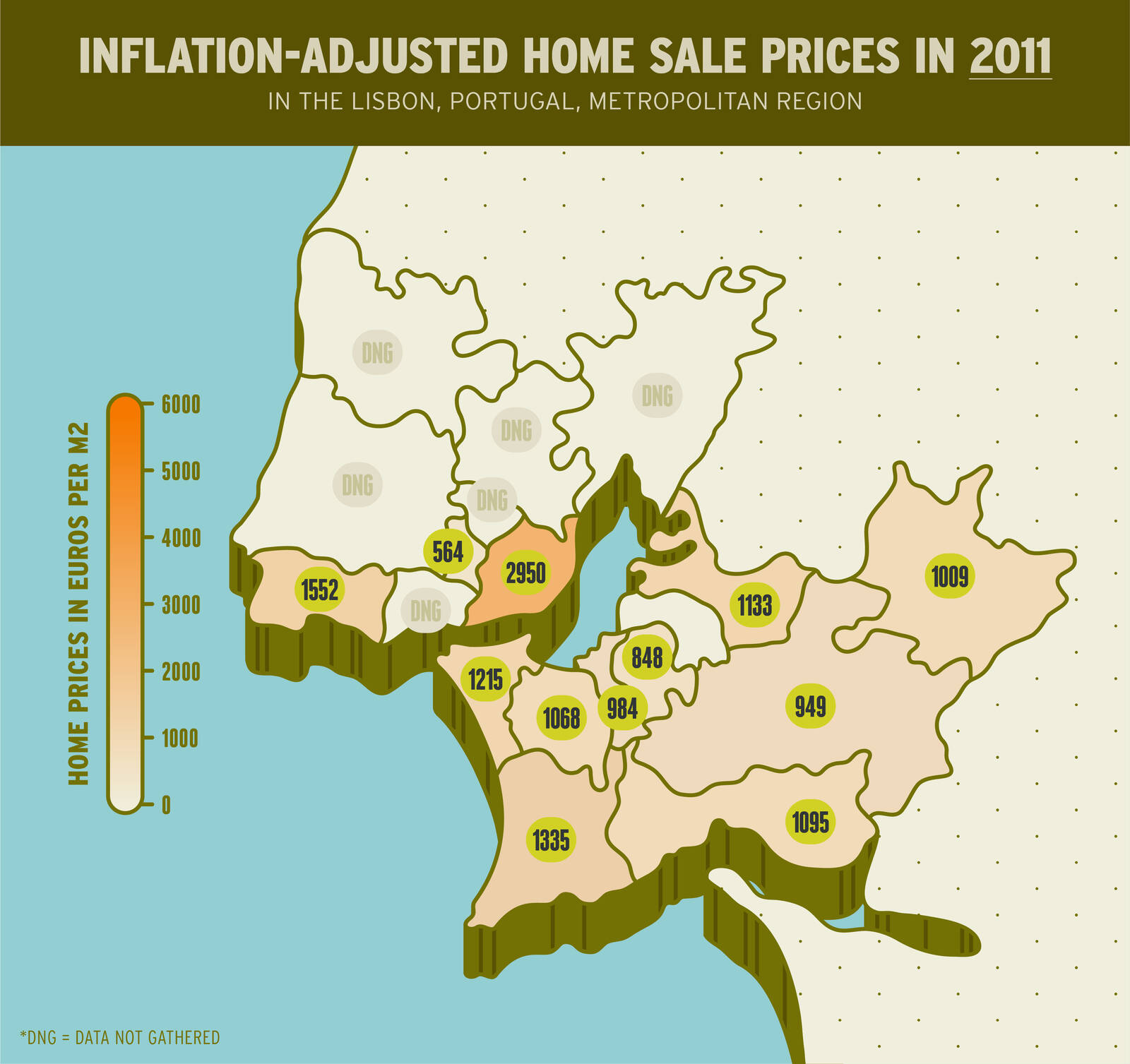
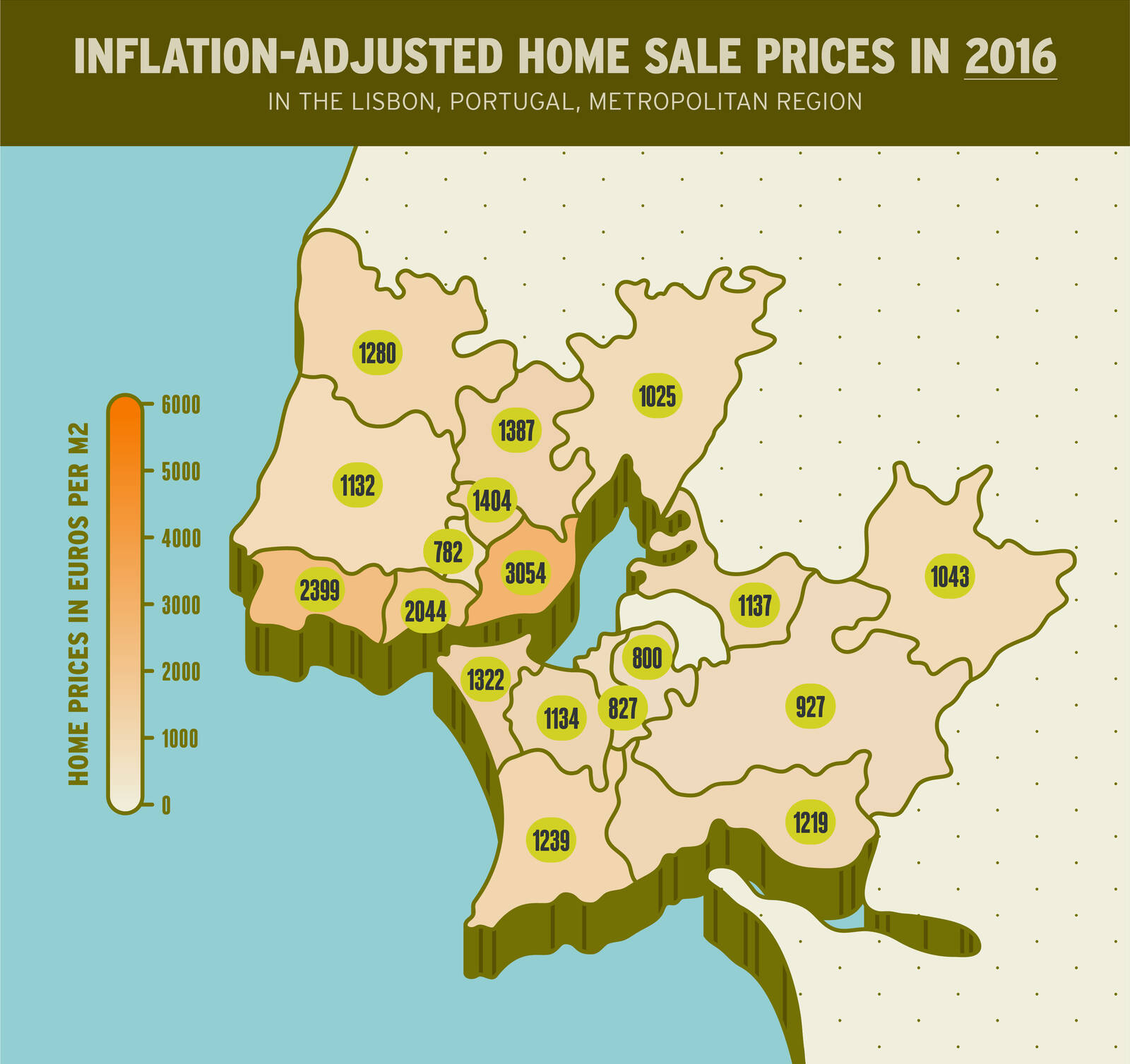
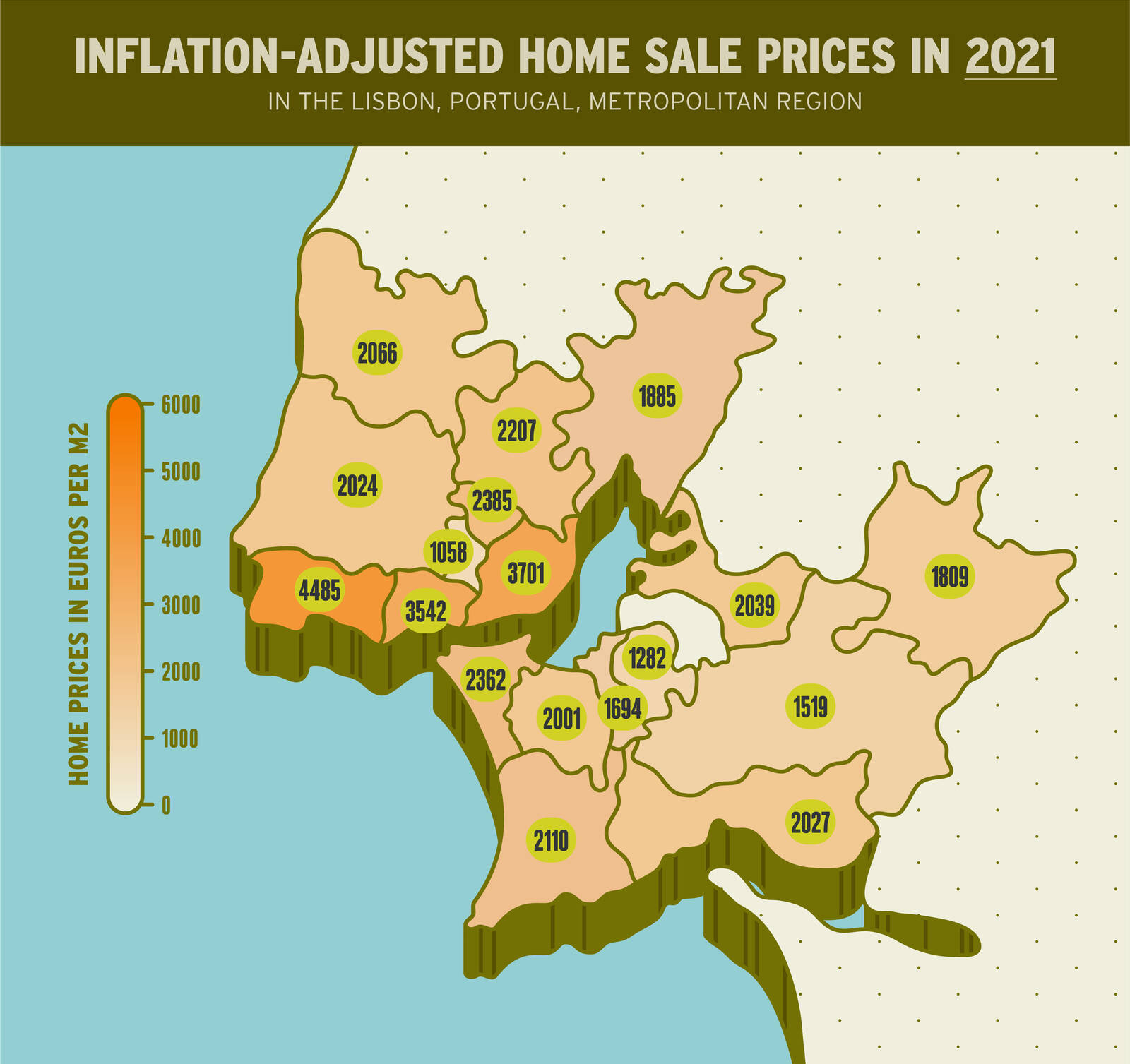
Furthermore, the steep rise in cost of living likely contributed to the large outflow of Lisbon natives between 2011 and 2021. The number of domestic residents in the Lisbon city center fell by 27,500 in that decade, whereas it increased by several thousand in many of the farther municipalities, such as Sintra to the north and Seixal to the south.
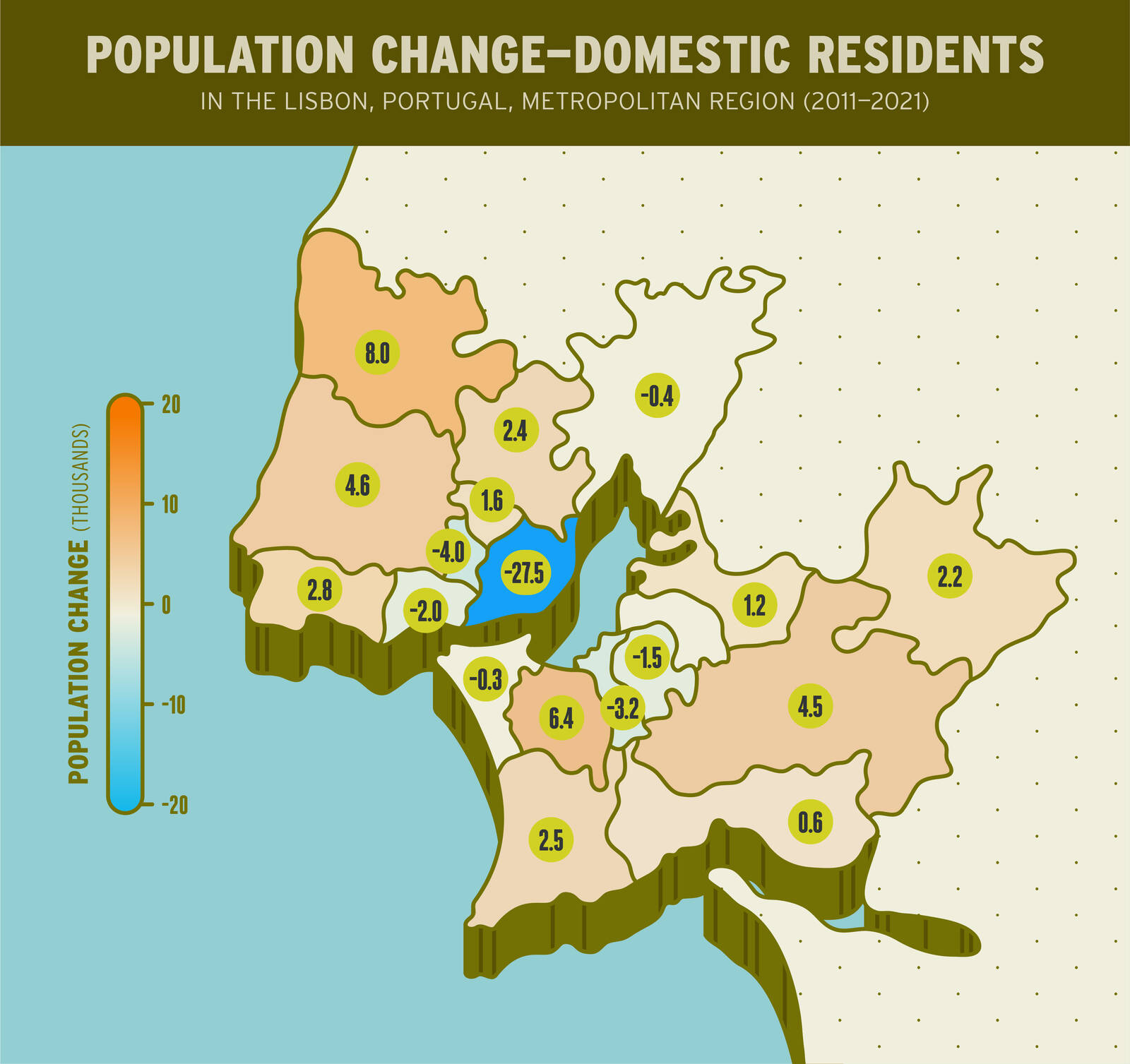
About the research
Guerreiro, Joao, Sergio Rebelo, Pedro Teles, and Miguel Godinho de Matos. 2024. “Foreign Residents and the Future of Global Cities.” Working paper.
Abraham Kim
Abraham Kim
Fred Schmalz
Riley Mann
University. All Rights Reserved. Privacy Policy.